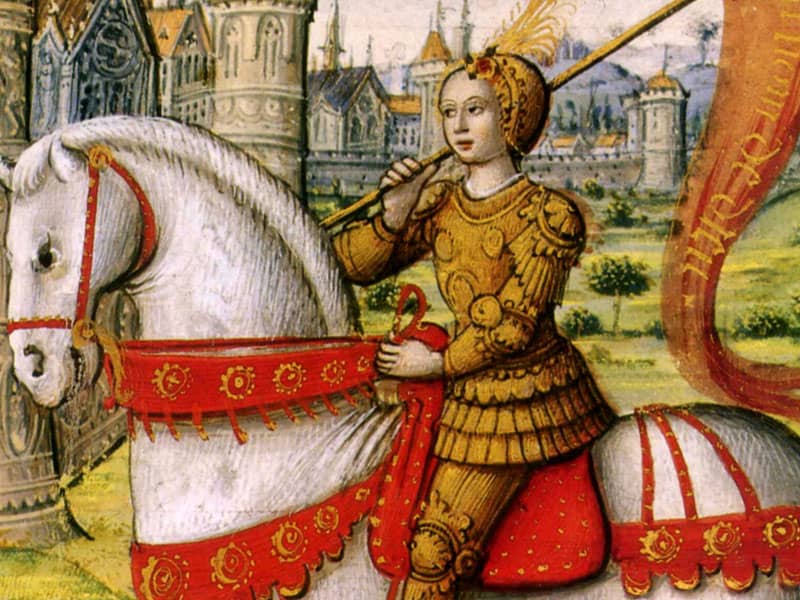But why have people honored Patrick's memory for more than 1,500 years? What do we know about the man who causes such an annual fuss?
The little information that we have, from two documents that he wrote in the fifth century A.D., sometimes surprises and upsets the saint's contemporary admirers.
Here are some of the things we can state with near certainty about St. Patrick:
Let's take these points one by one.
First, Patrick was born in Britain, an outpost of the Roman Empire, the son of a landowner and government official, and the grandson of a Christian priest. (This was before the universal discipline of priestly celibacy in the Western Church.)
At about age 16, he was kidnapped by Irish raiders taken from his hometown on the British coast and sold into slavery in Ireland. After six years, he escaped miraculously and eventually made his way back to Britain.
Patrick wrote that in dreams and visions he heard "the voices of the Irish" calling him back to be with them. He felt an irresistible need to carry the Gospel to the people among whom he had lived.
He had to maneuver his way into a position of favor so that he could be appointed missionary bishop and then go back, never to leave Ireland again. Even when his mission was criticized by enemies across the Irish Sea, he did not return to defend himself. So Ireland was his adopted home, his spiritual fortress.
Third, according to historians and travelers, snakes have not existed in Ireland since at least the first century before Christ. The symbol of the snake as tempter in the Garden of Eden and their convenient absence from Ireland were enough to make hagiographers lay credit at Patrick's feet.
According to other legendary accounts he was a prolific miracle- maker, changing ice into fire and rocks into cheese (and back again), for example. He also was a prodigious curser of rivers, streams, forests, and various malcontents who would not accept the Christian faith if further legends can be believed.
Fourth, the Church of Patrick's time can more accurately be described as "the churches," including a Church of Britain, a Church of Gaul, a Church of Rome, a Church of Africa, etc. The Church of his native Britain was, in fact, an important outpost of Christianity, at the farthest northern extent of the Western Roman Empire, which was in Patrick's time imploding.
Previous to Patrick the pope had, indeed, dispatched a bishop to Ireland, but that mission failed for some unknown reason. Patrick was sent by his colleagues in Britain, not by the bishop of Rome. Patrick believed that he was carrying Christ's message of salvation to the "most distant places" in the world, as the end time drew near.
Finally, before the 10th century, there was no process of canonization of saints as we know it today. Saints were acclaimed by the local people and local churches who kept their memories alive through devotions and oral traditions.
Such was Patrick's fame that he was almost immediately recognized by the Irish as a saint, revered and almost worshiped by the generations of Christians who soon became the overwhelming majority among the Irish people. His legacy was claimed and fought over by Catholics and Protestants, Irish and English, theologians and scholars, throughout most of the next millennium and a half.
Evidence in his own hand is clear: He was a holy, simple, godly man yes, he was clearly a saintly man.
The apostle of Ireland wrote, near the end of his life, "I am Patrick, a sinner, the most unschooled and least of all the faithful, and utterly despised by many."
He was evidently an extremely humble, even insecure, man. He carried with him on his dangerous mission a singularly abiding faith in God, a knowledge of only one book, the Bible, and a passion for preaching the Gospel to any who would hear and believe. He fought for his flock when they were threatened, nurtured the women and men who would succeed him after his death, and built a legacy of unwavering dedication to his Church.
Like an old Mass bell sounding across the green fields of time, the voice of the real Patrick, not the plaster saint, calls to us today clear and compelling.
He probably would be amused and miffed at the hoopla we have created to honor him. But he would no doubt be grateful to be remembered with such fierce affection as Irish-Americans (that is, all Americans, on St. Patrick's Day) have kept for him.

